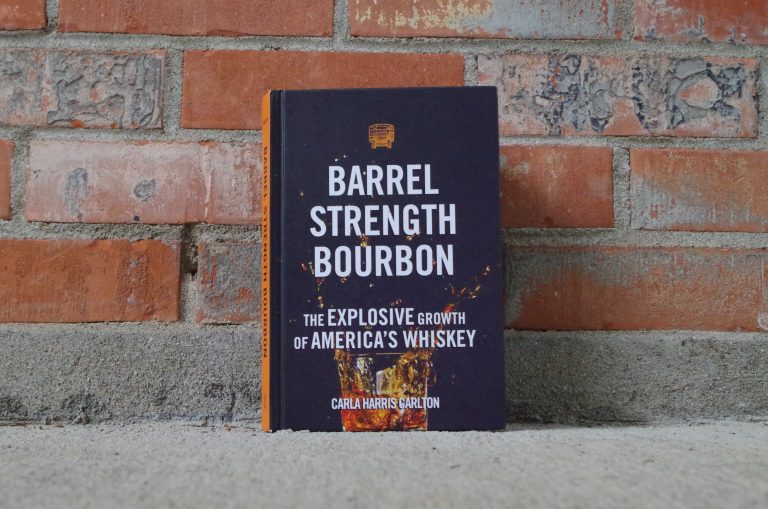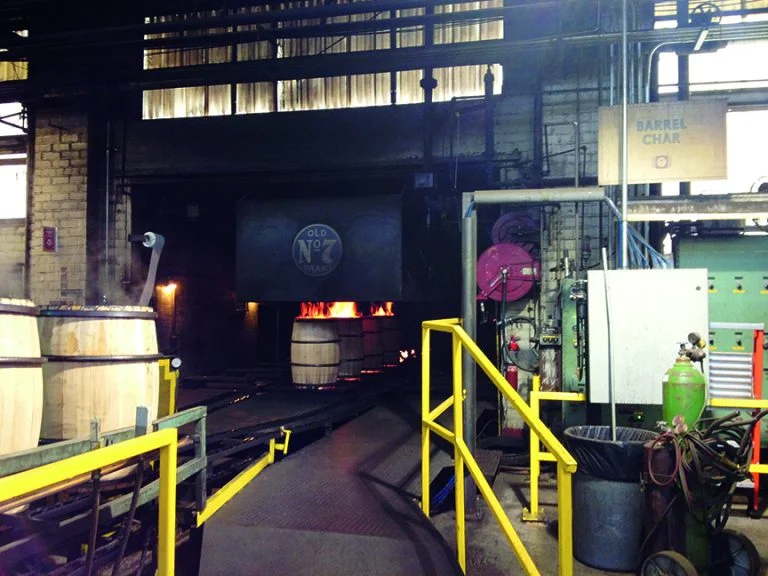Book Review: Barrel Strength Bourbon By Carla Carlton
I never get tired of reading about bourbon. No matter how many books are out there, someone will always come along with a unique perspective or a new approach. Enter Barrel Strength Bourbon: The Explosive Growth Of America’s Whiskey by Carla Carlton. Starting with the birth of Kentucky Bourbon along the banks of the mighty Ohio River and winding through pages about the industry, tourism, and how to drink bourbon, the conversational tone keeps the narrative interesting, like you’re seated at the bar with Carlton sharing drinks and geeking out about bourbon culture.
The fact she is situated in the middle of this culture shines through in her “Just a Sip” tidbits that are scattered through the book. Oh by the way, “As a general rule, whiskey is spelled with an e in the United States and Ireland but without an e in Canada, Scotland, and Japan. Two notable exceptions are Maker’s Mark Kentucky Straight Bourbon Whisky and Old Forester Kentucky Straight Bourbon Whisky,” proclaims one tidbit. Another tidbit cautions readers, “I begin every bourbon tasting with a PSA: bourbon is not wine. It has much more alcohol. Unless you want to clear your sinuses, do not breathe it deeply through your nose, and when tasting, do not take a huge gulp.” These small snippets of information are interspersed throughout the chapters, offering skimmable content readers could conceivably take in small doses on the road between distillery visits. There are even factoids about bourbon’s influential power, highlighting the relationship between what’s popular in the spirit world and what’s happening in popular culture, from Mad Men’s influence in popularizing the Old Fashioned to Maker’s Mark’s early adoption of influencer marketing.
Overall this is a great reference tool to anyone who wants to come to Kentucky to learn more about bourbon. It’s part travel guide, part historical marker, and part practical advice for taking on bourbon as a hobby. The indices are fabulous - there’s one entire index dedicated to the definition of just about every bourbon-related term you might find in the course of your bourbon journey, and another index dedicated completely to bourbon cocktails.
The whiskey geek in me had a few, albeit completely nitpicky, gripes. On page 34, Carlton begins talking about “flavored bourbon” and doesn’t immediately (it’s in there later, don’t worry) fall into an explanation about how those two words should never be used together - technically speaking, there’s no such thing as “flavored bourbon” (can you tell I have a strong opinion about this one?). Other completely ridiculous gripes include that gin isn’t distilled from Juniper berries as much as it is infused with them during the distillation process (p. 56), there is no mention of the use of artificial enzymes in the “How Bourbon Is Made” chapter (p. 60), and there’s no mention of the downside of the limestone water, which wiped out most of William LaRue Weller’s family because of how easily it spread typhus (p. 61).
There are certainly many more things to love about this book than there are things to gripe about. On page 78, I learned that the tree corks come from is a type of oak tree, which I never knew before. On page 85 there is a nice chart that shows bourbon production versus inventory throughout the last several decades, which nicely illustrates the progress being made today. And Chapter 5 draws a parallel between the rise in tourism, sales, and interest in bourbon, something I recently wrote about myself and completely agree with. Finally, the reference section for distillery visits was super helpful to anyone who has never been here and might not know that your GPS will legit try to kill you going to Maker’s Mark or Old Pogue. Look up directions before you leave whenever possible.
This is a great read for the summer, makes an excellent Father's Day gift and a great addition to any bourbon library.



